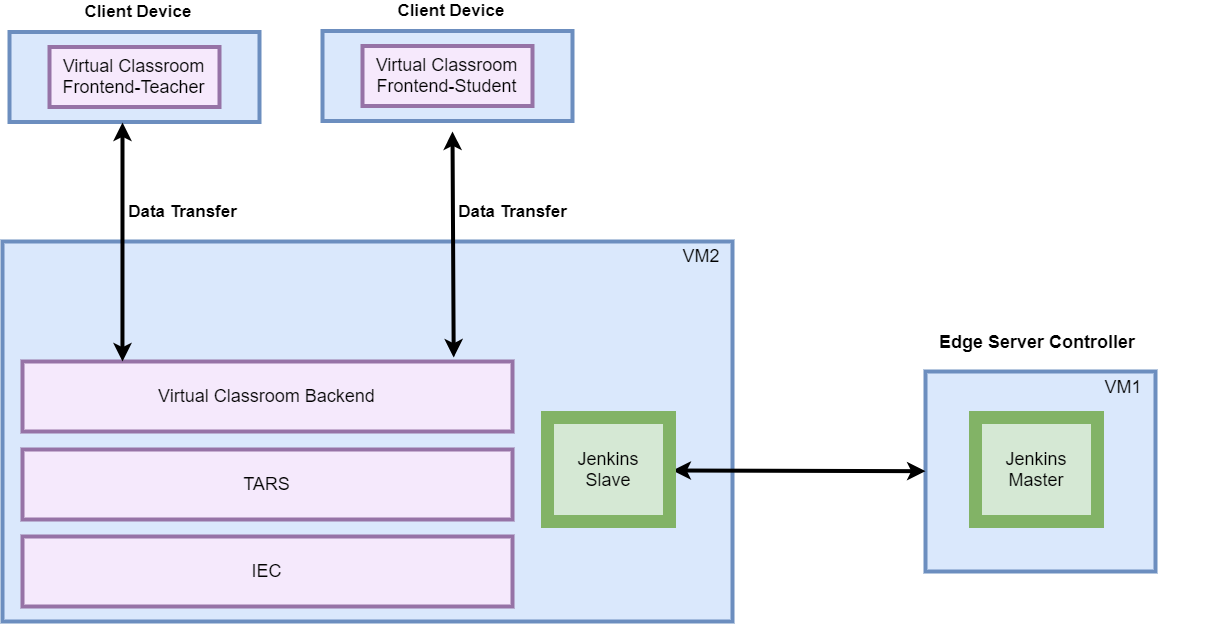Introduction
<Details about Additional tests required for this Blue Print in addition to the Akraino Validation Feature Project>
Akarino Test Group Information
<The Testing Ecosystem>
Testing Working Group Resources
Overall Test Architecture
Describe the components of Test set up
Test Bed
Test Framework
Traffic Generator
Test API description
<Akraino common tests>
The Test inputs
Test Procedure
Expected output
Test Results
<Blueprint extension tests>
The Test inputs
Test Procedure
Expected output
Test Results
<Feature Project Tests>
The Test inputs
Test Procedure
Expected output
Test Results
Test Dashboards
Single pane view of how the test score looks like for the Blue print.
Total Tests | Test Executed | Pass | Fail | In Progress |
|---|---|---|---|---|
Additional Testing
Bottlenecks/Errata
Test Minimum Requirements
- At least One Student Client, normally one Personal Computer
- At least One Teacher Client, normally one Personal Computer
- At least One Virtual Machine or Physical Server for service side
Test Architecture
For the minimum deployment, we ONLY test the function of the virtual classroom. Just deploy two clients and a server, shown in purple color, will be OK.
If you would like to test CI/CD functions, we would suggest deploying the functions shown in green color.
Furthermore, if you want to test the scale-out feature, adding more Client Devices and backend servers are required.
Test Steps
Step 1: Run Virtual Classroom in the backend
After everything is installed successfully(In terms of the detail installation, refer to Installation Document), run the virtual classroom application via the following commands:
cd /root/openvidu-vr/openvidu-vr-room
http-server -S
Step 2: Test on your PC via the browser
Note well: Make sure 8080 port is NOT blocked by the firewall.
Open Firefox on PC and visit the website: IP Address + 8080(Port Number)
Step 3: Test Teacher Mode
Press the Teacher Mode button and check the Teacher mode. In teacher mode, you will see the classroom as a teacher's view. You can see some students are in the classroom and are listening to your presentation. Then test talking to the student, test on-and-off the presentation screen as so on.
Step 4: Test Student Mode
Press the Student Mode button and check the Student mode. In Student mode, you will see the classroom as a student's view. You can see the teacher and other students on the remote side. Then test talking to the teacher and other students, test on-and-off the presentation screen as so on.
...


